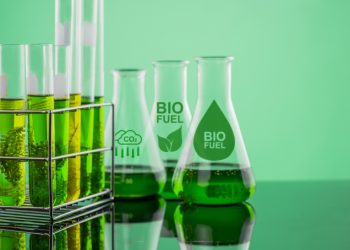Natural gas deliveries to US facilities producing LNG for export achieved a monthly record in July 2019, averaging 6.0 billion cubic feet per day (Bcf/d). This is 7% of the total US dry natural gas production, according to data from OPIS PointLogic Energy.
As EIA informs, during the first seven months of 2019, natural gas feedstock deliveries to LNG export facilities have been the fastest growing among all US natural gas consumption sectors.
Natural gas delivered by pipelines to Mexico and to US LNG export facilities reached 10.9 Bcf/d in July and averaged 10.0 Bcf/d in the first seven months of this year, 30% more than in the same period of 2018.
[smlsubform prepend=”GET THE SAFETY4SEA IN YOUR INBOX!” showname=false emailtxt=”” emailholder=”Enter your email address” showsubmit=true submittxt=”Submit” jsthanks=false thankyou=”Thank you for subscribing to our mailing list”]
The US has also been exporting more natural gas than it imports on an annual basis since 2017, and EIA expects that US natural gas exports will continue to increase as new LNG facilities come online.
EIA now estimates that US LNG exports set new records in June and July 2019 at 4.8 Bcf/d and 5.2 Bcf/d, respectively, according to tanker loadings data from Bloomberg L.P. Natural gas feedstock deliveries to LNG export terminals averaged 5.5 Bcf/d in June and 6.0 Bcf/d in July. This indicates that around 15% of the natural gas feedstock sent to LNG facilities was used as fuel in the liquefaction process.
In the first half of 2019, two new liquefaction trains started operation: Cameron LNG Train 1 in Louisiana in May and Corpus Christi LNG Train 2 in Texas in June. Current total US LNG export capacity stands at 5.4 Bcf/d across four facilities and nine liquefaction trains.
Two new LNG export facilities, Elba Island LNG in Georgia and Freeport LNG in Texas, plan to place their first trains in service in the next two months. Since July, both facilities have been receiving small amounts of natural gas feedstock deliveries in preparation for LNG production.
Production of LNG at Elba Island was expected to start in May 2019, but it has been delayed, partly due to unevenness in cryogenic temperatures in the moveable modular liquefaction system (MMLS) units, which are using a new technology. Kinder Morgan, the developer of Elba Island LNG, stated that 4 of the 10 MMLS units are complete and will begin service in the next few months.
The first train at Freeport LNG is expected to come online in September 2019, and the rest two trains are scheduled for the second and third quarters of 2020. Current plans are to complete construction and bring the remaining trains at Elba Island, Corpus Christi, and Cameron online in 2020 and 2021.

































































